
Poinsettias, Euphorbia pulcherrima, are gorgeous plants to have around during the holidays. And to keep them healthy, happy, and colorful for as long as possible, it’s important to prevent them from getting too cold.
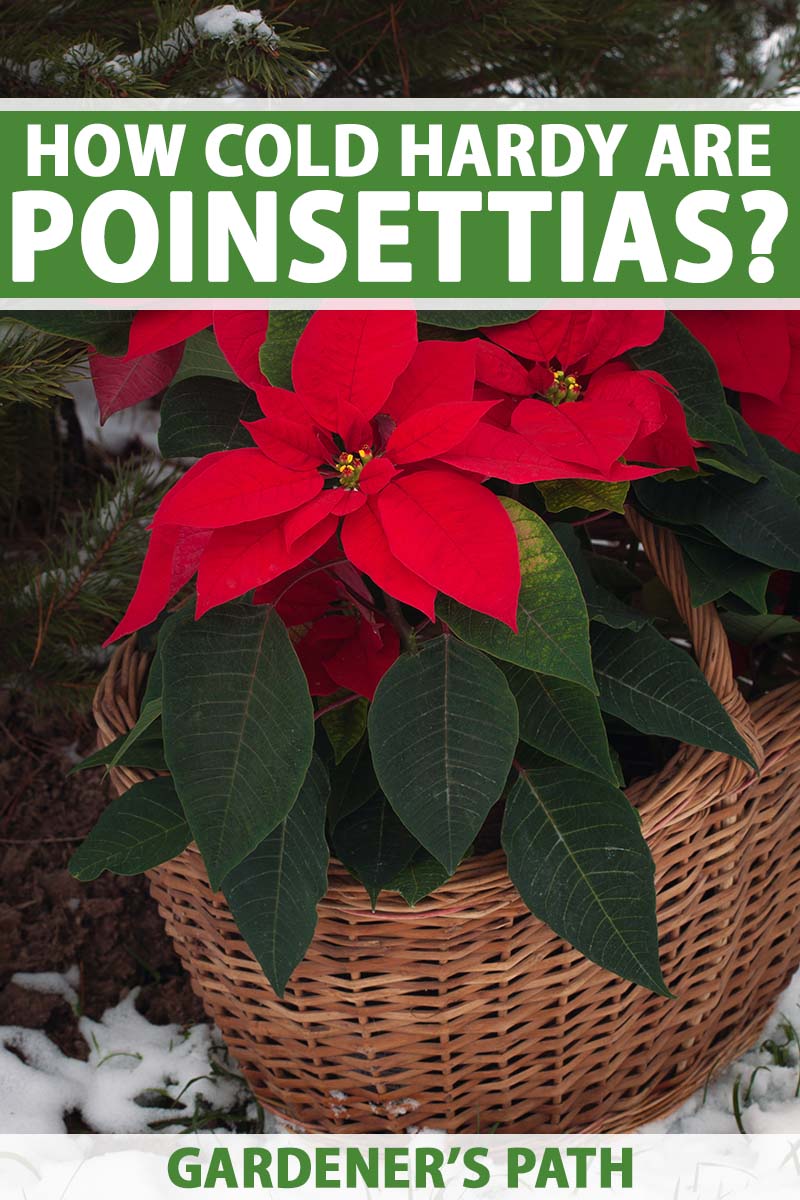
There are a few reasons you may want to learn about this plant’s cold tolerance.
Maybe, like me, you live in a drafty old house, and you want to make sure you’ll be able to find a location to keep your Christmas flower from getting chilled.
Perhaps you’re considering whether you might save your plant after the holidays and keep it as a houseplant or plant it in your outdoor landscape, climate permitting.
Or maybe you’re wondering if you can put one of these gorgeous winter bloomers beside your front door during the winter months as part of your festive holiday decor.
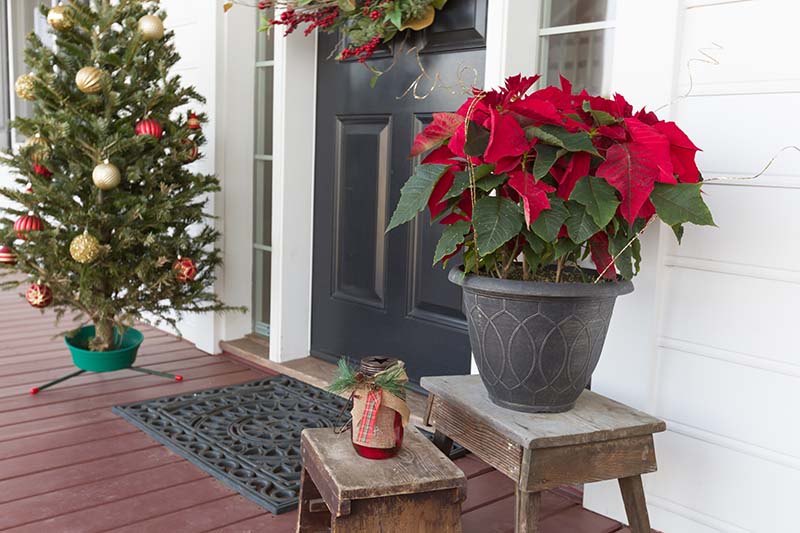
Before you situate your Christmas star whether that is indoors or part of your outdoor decor, it’s a good idea to make certain your winter conditions are a good match for this plant’s needs.
Ready to learn more? Here’s what I’ll cover:
What You’ll Learn
Cold Limits
Originating in the tropical forests of Mexico and Guatemala, poinsettias are happiest when temperatures are mild, in a nice comfortable range of between 65-70°F.
In their native Latin American habitat, they don’t experience freezing temperatures.
But even cold weather above freezing can harm Christmas flowers – they will begin to drop their leaves when temperatures fall to 50°F.
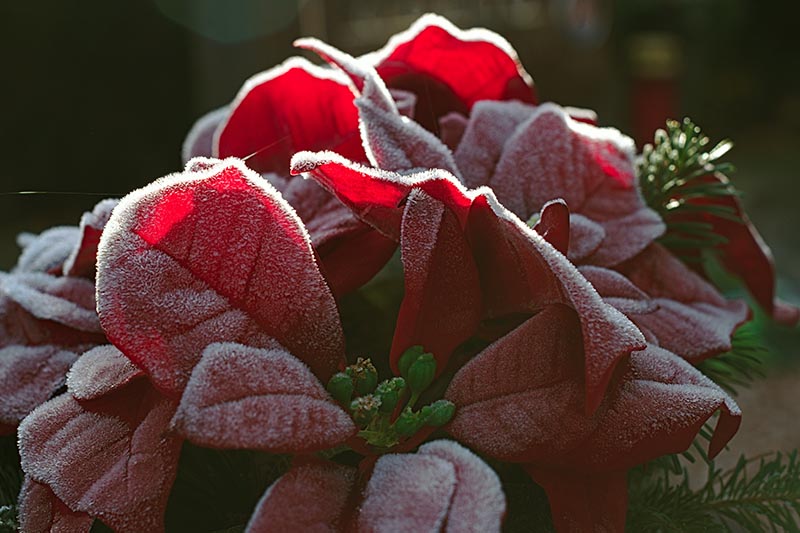
While a plant that has dropped its leaves after limited exposure to such cold temperatures may recover, extended exposure to temperatures below 50°F can kill poinsettias outright, leaving them no hope of recuperating.
These plants also don’t enjoy dramatic temperature fluctuations.
So if you are trying to find the best location for your Christmas star indoors, make sure to avoid drafty locations, such as next to cool windows that lower the temperature of the air.
Also make sure to avoid placing these winter bloomers close to entrances and exits, where repeated exposure to frosty blasts of cold air as doors open and close may get the better of them.
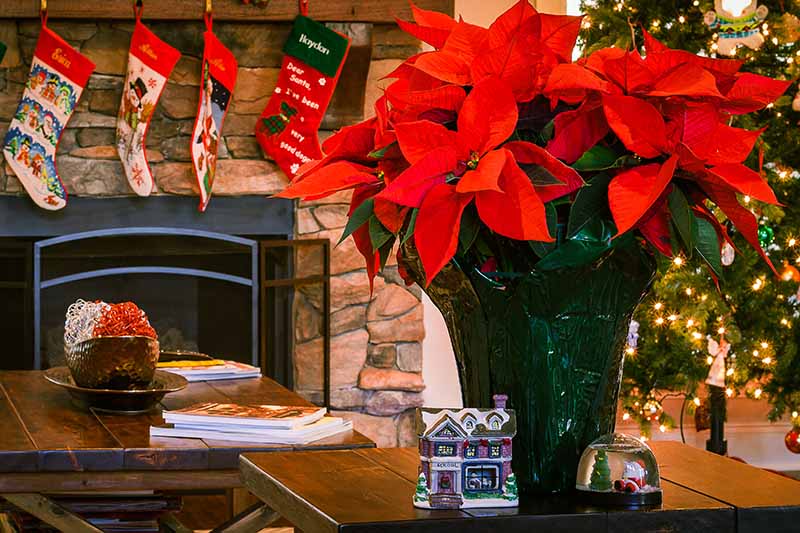
When kept as houseplants, you will also want to avoid locating them next to areas that heat up dramatically, such as very close to fireplaces or other heat sources.
As far as the Christmas flower is concerned, warmer isn’t necessarily better. As mentioned, the ideal temperature range for them to thrive is 65-70°F without any drastic swings.
Hardiness Zones
On the other hand, if you live somewhere where winters are mild, you might think of poinsettias as an outdoor option – they are considered hardy in Zones 9-11.
This range includes coastal areas of the Pacific Northwest, large swaths of California, southern Texas, and some areas of the Gulf Coast, as well as parts of the southeast.
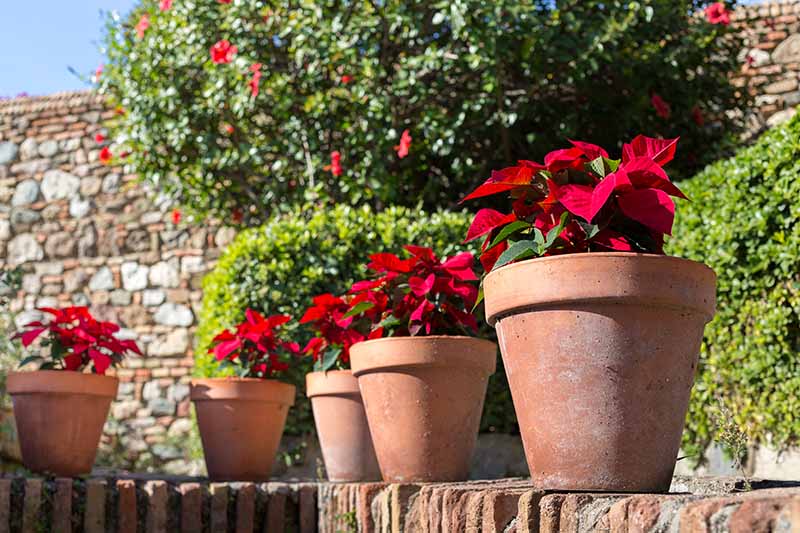
In these locations, they can typically survive outside, either planted in the garden or in a pot.
Before you locate your Christmas flower outdoors or place it on your porch, make sure to double check your hardiness zone.
If you aren’t sure what zone you’re in, you can type your zip code into the interactive USDA growing zone map from the USDA Agricultural Research Service to find out.
Check out this article about USDA Hardiness Zones and how they have changed over the years to learn more.
Keeping Your Plant Comfortable
Even in Zones 9-11, temperatures still sometimes fall below poinsettia’s lower comfort limit of 50°F.
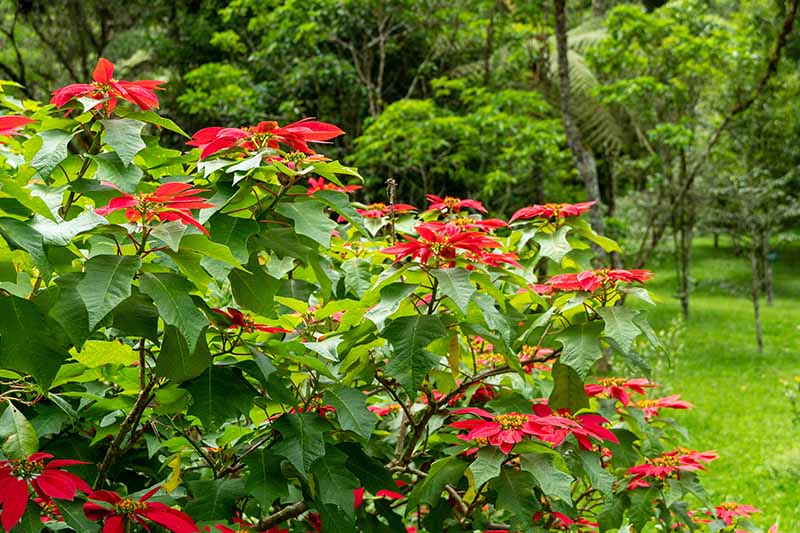
To compensate for this, you may need to find a microclimate in your landscape, a spot that is warmer than others, such as in front of a south facing wall, to improve your Christmas star’s chances of surviving out in the elements.
Mulching over the plant’s roots during the cold months will also help ensure that it stays alive, even if the stems get bitten by a cold snap.
See our guide to learn more about growing poinsettia in the landscape. (coming soon!)
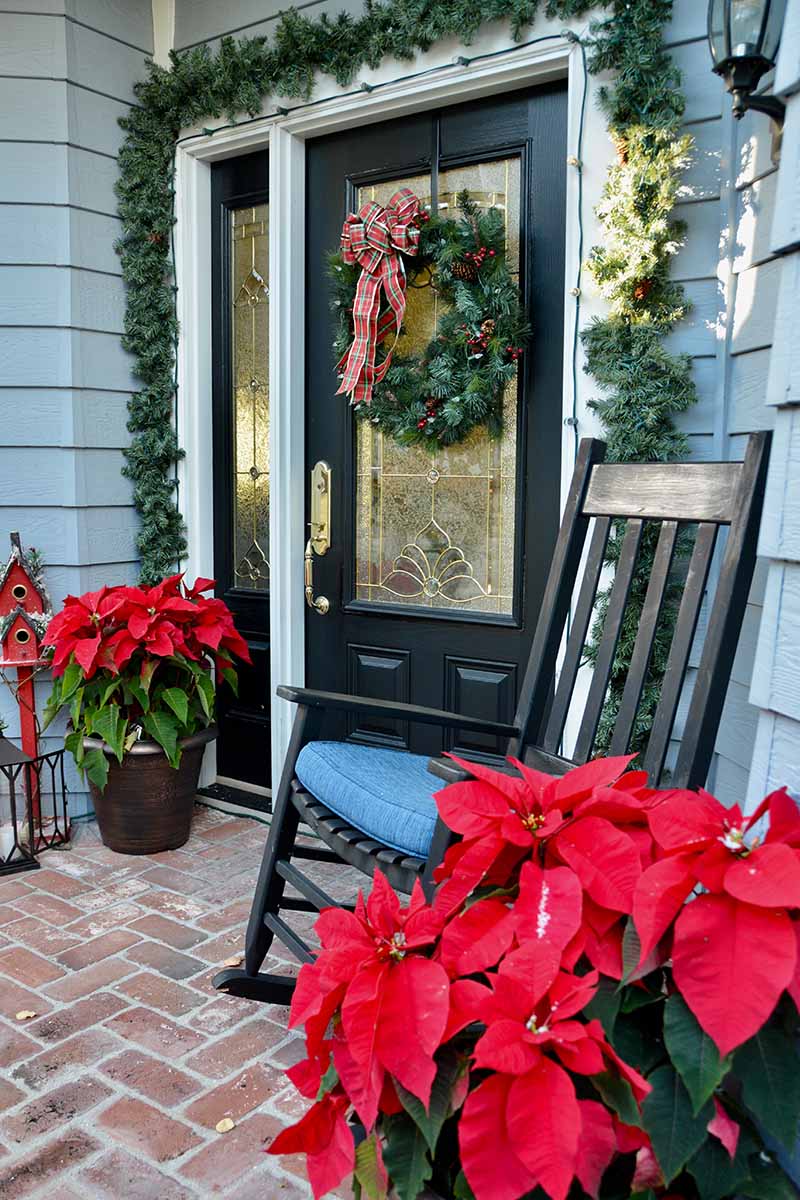
If your outdoor poinsettias are in pots or planters rather than in the ground, keep an eye on the weather during cold spells and be prepared to bring them indoors if temperatures are forecast to fall below 50°F.
Your Cozy Christmas Star
Whether indoors or out, keep your poinsettia at a nice comfortable temperature above 50°F, and your plant will remain cozy and bright.

Have you cared for these colorful beauties in chilly temperatures or lost one to cold weather? Share your story with us and our other readers in the comments section below.
And to learn more about these vibrant holiday plants, check out these other poinsettia articles next:
- How to Grow and Care for Poinsettias
- Are Poinsettia Plants Poisonous?
- How to Propagate Poinsettia Plants from Cuttings
© Ask the Experts, LLC. ALL RIGHTS RESERVED. See our TOS for more details. Uncredited photos: Shutterstock.
The post How Cold Hardy Are Poinsettia Plants? appeared first on Gardener's Path.
Source: gardenerspath.com

Комментариев нет:
Отправить комментарий